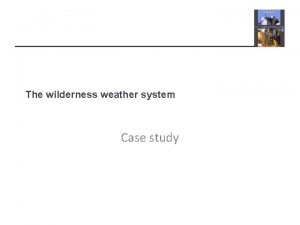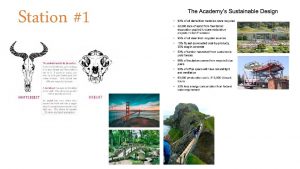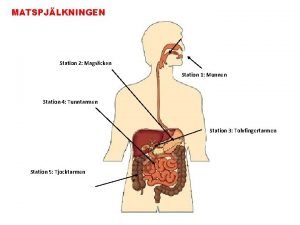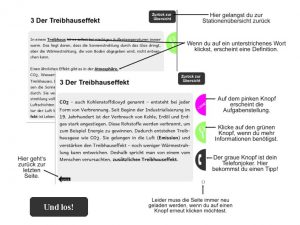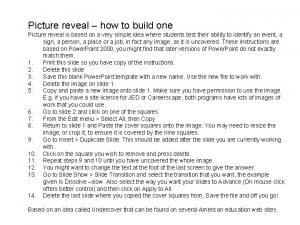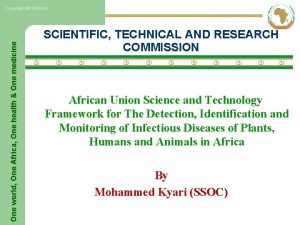STATION ONE Study this picture of the environment




























- Slides: 28

STATION ONE: Study this picture of the environment of Galapagos Opuntias (prickly pears). List at least 3 challenges the cacti would face living in this environment.

STATION TWO: Cacti are plants (Kingdom Plantae). They have the same structures as all other plants, but the structures have been modified. In this lab, you will see modifications of the stem, leaf and tissues in Cacti. A TYPICAL PLANT

Make a sketch of the piece of Opuntia cactus at this station (cactus or photo). Label your sketch using the drawing above.


STATION THREE (1): STEMS The CLADODES (or pads) of Opuntia look like leaves but they are actually modified stems. This is known from the way they grow and from the tissues that carry water and carry out photosynthesize inside them. The trunk and leave-like pads are considered homologous structures to the stem of a typical plant.

STATION THREE (3): Stems of Opuntia are green. They have tiny openings called stomates that let in carbon dioxide needed for photosynthesis. These are usually found on leaves. stomates During the evolution of cacti, the genes for making stomates became active in stems, when they are usually only active in leaves. This is an example of a homeotic mutation that was beneficial.

STATION THREE (2): Stems The cactus pads are round and fleshy so they have less surface area - this reduces water loss. They also have a waxy covering called the cuticle. http: //www. sbs. utexas. edu/mauseth/researchoncacti/cortex%20 text. htm How do the rounded shape of the cactus pads and the waxy cuticle help the cactus survive?

STATION FOUR (1): LEAVES The leaves of cacti are the spines. They contain all the tissues normally found in green leaves. Leaves have been modified for different uses in cacti such as defense against herbivores and protection from the sun. , The tiny hairs are called glochids.

STATION FOUR (3): The trunks of tree cacti are covered with spines. How do the spines and glochids help the cactus survive in its environment?

STATION FIVE: REPRODUCTION Opuntia reproduce both sexually and asexually. Sexual Reproduction: How do offspring produced by sexual reproduction compare genetically to the parent plants? How could this help the parent (and species) survive genetically?

STATION FIVE (2): POLLINATORS Cacti depend on pollinators to move pollen from one plant to another to increase genetic variation in their populations. Flashy flowers and nectar attract pollinators.

STATION FIVE (3): ASEXUAL REPRODUCTION Opuntia can reproduce asexually from fruits or pads that fall from the parent plant. New plants can sprout from nodes called aureoles. watchingtheworldwakeup. blogspot. com How do asexual offspring compare genetically to the parent plant? treeandplantnursery. com How could asexual reproduction help the parent plant survive?

STATION SIX: PHOTOSYNTHESIS Cacti save water through a special form of photosynthesis called CAM: Plants need carbon dioxide from the air - but they can dry out getting it!

STATION SIX (2): Cacti take in carbon dioxide at night, when evaporation is less, and store it in a C 4 molecule to use during the day. How does CAM photosynthesis help the cactus survive and reproduce in its environment?

STATION SEVEN (1): GROWTH FORM Growth form refers to the shape of the plant. Tree cacti have a tree-like or arborescent growth form. Some Opuntia in the Galapagos have a bush-like form called decumbant or prostrate. ARBORESCENT DECUMBENT

How is the arborescent growth form an adaptation to their environment? Frank J. Sulloway http: //www. skeptic. com/eskeptic/06 -07 -28/

STATION SEVEN(3): Giant tortoises like to eat cladodes that fall from tree cactus. They will eat the low-hanging cladodes of the cacti. Which islands have tree cacti on them? How is the arborescent growth form an adaptation to their environment?

STATION SEVEN (4) + + X

STATION EIGHT: HUMAN USES OF OPUNTIA Which of these are actually uses for prickly pear cacti? q Fruit q Clothing q Vegetable q Anti-erosion q Source of dye for food q Making bricks q Diabetes treatment q Decorative Garden Plant q Vitamins q Alcoholic beverage

STATION EIGHT(2): HUMAN USES OF OPUNTIA ANSWERS: Fruit Vegetable Source of dye for food Medicines Decorative Garden Plant Toothpaste q Clothing ? ? ? Anti-erosion Making bricks Vitamins Alcoholic beverage

STATION EIGHT(3): Beetles grown on prickly pear make an organic red food dye. Mmmmmm!

STATION EIGHT (4): Used to help stop desertification and provide food for animals. http: //www. fao. org/DOCREP/005/Y 2808 E/y 2808 e 0 d. htm Can these human uses of Opuntia be considered an adaptation of Opuntia? ? Why not?

STATION NINE: CONSERVATION In the Galapagos, Opuntia species are affected by human impacts: Habitat loss Farms displace natural communities. Invasive species Goats, donkeys, pigs, horses all eat Opuntia. Climate change El Nino rains and storms can knock over tree cacti

STATION NINE (2):

STATION NINE (3): Climate Change • More frequent EL NIÑOS • Sea level rise • Increased rainfall Cacti live near the ocean. Their habitat will be reduced by sea level rise. Cacti swell with water when it rains and can topple over. High winds can knock large cacti over.

STATION NINE (4): STATION 8: CONSERVATION Vulnerability is mainly Caused by habitat loss or destruction. Critically Endangered means that a species' numbers have decreased, or will decrease, by 80% within three generations. An endangered species is a population of organisms which is at risk of becoming extinct.

STATION 9 (last!): CONSERVATION The six species of prickly pear cacti in the Galapagos are threatened by habitat loss, invasive plants and animals. SPECIES Genus species IUCN STATUS Opuntia helleri VULNERABLE Opuntia galapageia ENDANGERED Opuntia insularis ENDANGERED Opuntia megasperma VULNERABLE Opuntia saxicola Opuntia echios CRITICALLY ENDANGERED VULNERABLE What are threats to survival of Galapagos Opuntia species? What is a good reason to conserve these species?

Exit slip: Describe an adaptation of Opuntia. Give the specific environmental challenge it helps the plant cope with and tell why it is an adaptation.
 Financial environment of business
Financial environment of business Wilderness weather station
Wilderness weather station Wilderness weather station case study
Wilderness weather station case study One empire one god one emperor
One empire one god one emperor One one one little puppy run
One one one little puppy run One king one law one faith
One king one law one faith One empire one god one emperor
One empire one god one emperor One ford behaviors
One ford behaviors See one do one teach one
See one do one teach one See one, do one, teach one
See one, do one, teach one Night structure
Night structure See one do one teach one
See one do one teach one One vision one identity one community
One vision one identity one community Asean one vision one identity one community
Asean one vision one identity one community Picture 1 picture 2
Picture 1 picture 2 Marketing environment case study
Marketing environment case study Hình ảnh bộ gõ cơ thể búng tay
Hình ảnh bộ gõ cơ thể búng tay Ng-html
Ng-html Bổ thể
Bổ thể Tỉ lệ cơ thể trẻ em
Tỉ lệ cơ thể trẻ em Voi kéo gỗ như thế nào
Voi kéo gỗ như thế nào Chụp phim tư thế worms-breton
Chụp phim tư thế worms-breton Chúa sống lại
Chúa sống lại Các môn thể thao bắt đầu bằng tiếng nhảy
Các môn thể thao bắt đầu bằng tiếng nhảy Thế nào là hệ số cao nhất
Thế nào là hệ số cao nhất Các châu lục và đại dương trên thế giới
Các châu lục và đại dương trên thế giới Công của trọng lực
Công của trọng lực Trời xanh đây là của chúng ta thể thơ
Trời xanh đây là của chúng ta thể thơ Mật thư tọa độ 5x5
Mật thư tọa độ 5x5

